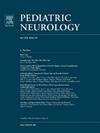RNU4-2 的面貌和特征:一种新的、常见的、可识别的但却隐藏的神经发育障碍
IF 3.2
3区 医学
Q2 CLINICAL NEUROLOGY
引用次数: 0
摘要
背景RNU4-2是一种新发现的非编码基因,在神经发育障碍(NDD)患者中占很大比例。由于常用的临床检测方法(包括外显子组测序和目前制定的多基因面板)无法检测到非编码区的变异,因此影响了诊断。这种疾病的发病率相对较高,预计会影响成千上万名未确诊的 NDD 儿童,因此更需要有更好的工具来促进诊断。基因与疾病相关的最初报告概述了综合表型特征,但缺乏对患者的详细评估,因此可能对表型特征报告不足,也未能突出其独特性。我们的目标是识别具有 RNU4-2 基因变异的个体,对临床特征进行深入的表型分析。我们试图定义可能提示诊断的关键特征,以突出可检测非编码区变异的专业检测的适用人群。方法我们回顾了 6,734 例患者的基因组数据,确定了 5 例具有复发性 RNU4-2 (n.64_65insT) 基因变异的患者。我们对其中四人进行了临床评估。结果我们发现了共同的临床特征、独特的面部畸形模式和共同的影像学异常。结论加强对 RNU4-2(n.64_65insT-常见变异体)表型的识别,尤其是畸形面部特征的识别,将有助于早期诊断。通过基因组测序或靶向基因检测,可根据患者的不同特征选择检测RNU4-2变体的方法。此外,医疗和研究系统还可以通过查询数据库中表现出本文所述特征的个体来确定未确诊的患者。本文章由计算机程序翻译,如有差异,请以英文原文为准。
The Face and Features of RNU4-2: A New, Common, Recognizable, Yet Hidden Neurodevelopmental Disorder
Background
RNU4-2 is a newly identified, noncoding gene responsible for a significant proportion of individuals with neurodevelopmental disorders (NDDs). Diagnosis is hampered by the inability of commonly employed clinical testing methods, including exome sequencing and currently formulated multigene panels, to detect variants in the noncoding region. The relatively high prevalence of this condition, predicted to affect thousands of undiagnosed children with NDDs, makes it even more relevant to have better tools to facilitate diagnosis. The initial report of the gene-disease association outlined aggregate phenotypic features but lacked detailed patient evaluations, potentially under-reporting phenotypic features and failing to highlight unique aspects. We aimed to identify individuals with RNU4-2 gene variants to deeply phenotype the clinical profile. We sought to define key features that may suggest the diagnosis, to highlight individuals for whom specialized testing, able to detect noncoding region variants, may be indicated.
Methods
We reviewed genomic data from 6,734 individuals, identifying five with recurrent de novo RNU4-2 (n.64_65insT) variants. We clinically evaluated four. Findings were compared with those previously reported.
Results
We identify common clinical features, a distinctive dysmorphic facial pattern, and shared imaging abnormalities. We describe novel aspects including longitudinal trajectory and treatment response.
Conclusions
Enhanced recognition of the RNU4-2 (n.64_65insT-common variant) phenotype, particularly the dysmorphic facial features, will facilitate earlier diagnosis. Distinctive characteristics will guide the selection of patients for testing able to detect RNU4-2 variants: genome sequencing or targeted gene testing. Furthermore, health and research systems may identify undiagnosed patients by querying databases for individuals exhibiting the traits described herein.
求助全文
通过发布文献求助,成功后即可免费获取论文全文。
去求助
来源期刊

Pediatric neurology
医学-临床神经学
CiteScore
4.80
自引率
2.60%
发文量
176
审稿时长
78 days
期刊介绍:
Pediatric Neurology publishes timely peer-reviewed clinical and research articles covering all aspects of the developing nervous system.
Pediatric Neurology features up-to-the-minute publication of the latest advances in the diagnosis, management, and treatment of pediatric neurologic disorders. The journal''s editor, E. Steve Roach, in conjunction with the team of Associate Editors, heads an internationally recognized editorial board, ensuring the most authoritative and extensive coverage of the field. Among the topics covered are: epilepsy, mitochondrial diseases, congenital malformations, chromosomopathies, peripheral neuropathies, perinatal and childhood stroke, cerebral palsy, as well as other diseases affecting the developing nervous system.
 求助内容:
求助内容: 应助结果提醒方式:
应助结果提醒方式:


